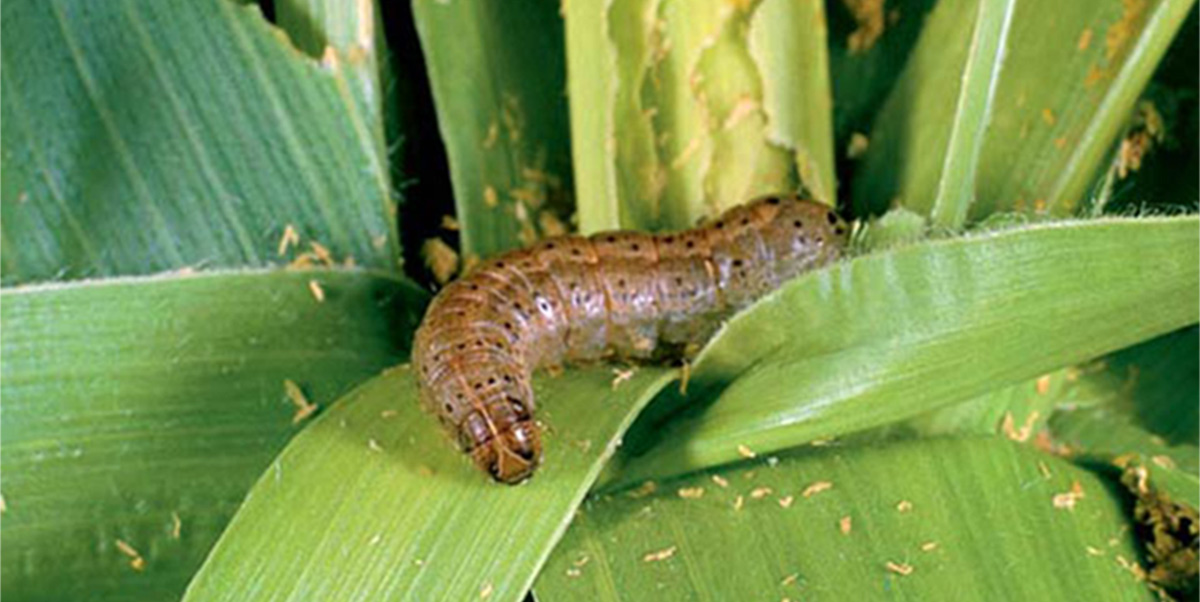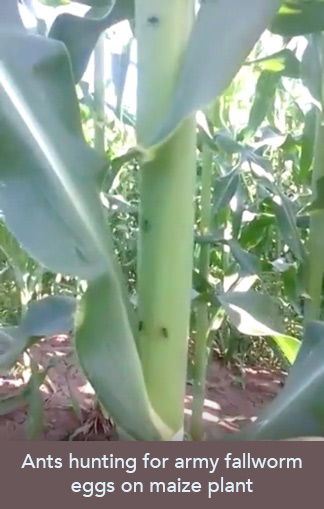
Biological controls succeed where GM has failed against the pest
GMO proponents are claiming that Africa must accept GM Bt insecticidal maize to defeat the fall armyworm pest – but they are playing fast and loose with the facts, misleading farmers and policymakers alike.
According to an article in the Economist magazine, the fall armyworm "has marched through Africa's fields and is threatening to cause a food crisis". The Food and Agriculture Organisation (FAO) reported in 2017, "The pest has been recently detected in Kenya and is suspected to have entered the country from Uganda. It is also known to be present in Burundi, Ethiopia and Rwanda."
The Economist article pays brief lip service to agroecological methods of controlling the pest, such as mixing crops, encouraging natural predators and patrolling fields to crush the eggs by hand. But then, in line with the magazine's usual pro-GMO stance, the article says that African farmers would do better "to copy America's commercial farmers, who plant GM crops that are largely resistant to the worm". However, the Economist laments that "Almost all African countries apart from South Africa have formally or informally banned GM crops, following iffy advice from ecowarriors. Lifting these restrictions would lead to fewer hungry caterpillars and fewer hungry people."
Such pro-GMO propaganda has worked, at least on the agency that is supposed to be Ghana's GMO regulator but which has taken on the role of GMO promoter. Eric Amaning Okoree, CEO of Ghana's National Biosafety Authority, recently said that "genetically modified (GM) crops have a high potential of controlling the fall armyworm".
GM Bt maize failed against fall armyworm
Sadly, Okoree is being lied to. GM Bt insecticidal maize targeting the fall armyworm has already failed.
Evidence of GM Bt maize's failure comes from a study from Brazil. The study found frequently occurring and significant levels of resistance in the fall armyworm to the Cry1F insecticidal protein used in the maize. Five of eight populations surveyed exhibited significant resistance levels, which were over 32 times higher than that of the standard susceptible laboratory strain. Cry1F resistance gene variants were identified in all eight of the populations tested.
The fall armyworm populations with lower susceptibility to Cry1F were derived from Brazilian regions of intensive corn production, indicating that such low susceptibility is likely associated with past genetic selection through exposure to Bt corn or Bt-based sprays. The frequency of the gene variant for resistance was lower in regions “with more diversified agroecosystems”.
The researchers note that Cry1F corn fails to express high enough levels of the Bt toxin to kill the fall armyworm, allowing those individuals that carry the resistance gene variant to survive and breed, thus accelerating the accumulation of the resistance gene variant in the population.
The researchers also cite findings that fall armyworms that are resistant to Cry1F also quickly become resistant to other Bt toxins in GM crops, in a phenomenon known as cross-resistance.
The study, which interestingly was part-funded and supported by DuPont, concludes that the results show “a challenging situation for resistance management”.
Some may argue that Brazil is not Africa. But the biological laws of selection guarantee that pest resistance to the Bt toxins in GM Bt crops will quickly take root in Africa too within a few years, if GM maize is adopted. Such resistance has already been reported in Puerto Rico and the South-Eastern US.
What will happen to African farmers who swallow the GM bait when their crops fall victim to the pest? Who will give them money to buy the chemical insecticides that are now being recommended to Brazilian farmers to control infestations?
 Methods that work
Methods that work
Fortunately, there are proven methods of controlling the fall armyworm that don't involve already-failed and expensive GM maize. One effective biological control is the humble ant. In a study conducted in Nicaragua, ants were found to significantly reduce fall armyworm and corn leafhopper abundance as well as damage to maize plants.
Farmers in Malawi have put this knowledge to use. They spread a fish soup known as bonya in maize fields to attract the ants, which then attack and eat the armyworms. You can watch the ants doing their work in this video.
Other Malawian farmers are reported to be using neem leaves, a widely used natural insecticide in many countries.
According to a village leader in Zomba, Malawi, crops are responding well to these methods.
GMO failure in South Africa
While the Economist holds up South Africa's embrace of GM maize as an example for the rest of Africa to follow, the Alliance for Food Sovereignty in Africa (AFSA) reminds us, "After a decade of GM maize as South Africa’s staple food, 46% of households are hungry, 1 in 5 children in SA are stunted, and over 50% of SA women are overweight or obese."
South Africa has hosted GMO farming projects involving cotton, soy and maize that ended in disaster for farmers.
A scientific review of the performance of Bt maize for smallholder farmers in South Africa warned against the high cost and sometimes poor performance of the seeds. The review found that "Resource-constrained smallholders who do not have an economic buffer are not able to absorb losses in years for which the cost of Bt maize seed does not pay off." The authors concluded that "commercial varieties into which the Bt trait is introduced are outperformed by locally used non-GM hybrids and OPVs [non-GM open pollinated varieties], which are better adapted to smallholders’ agro-ecologies, fluctuations in rainfall and suboptimal storage conditions".
Farmers and policymakers in other African countries must learn the lessons of history and be on their guard against false and self-serving claims by GMO lobbyists.
Report: Claire Robinson
Image of fall armyworm: FAO










